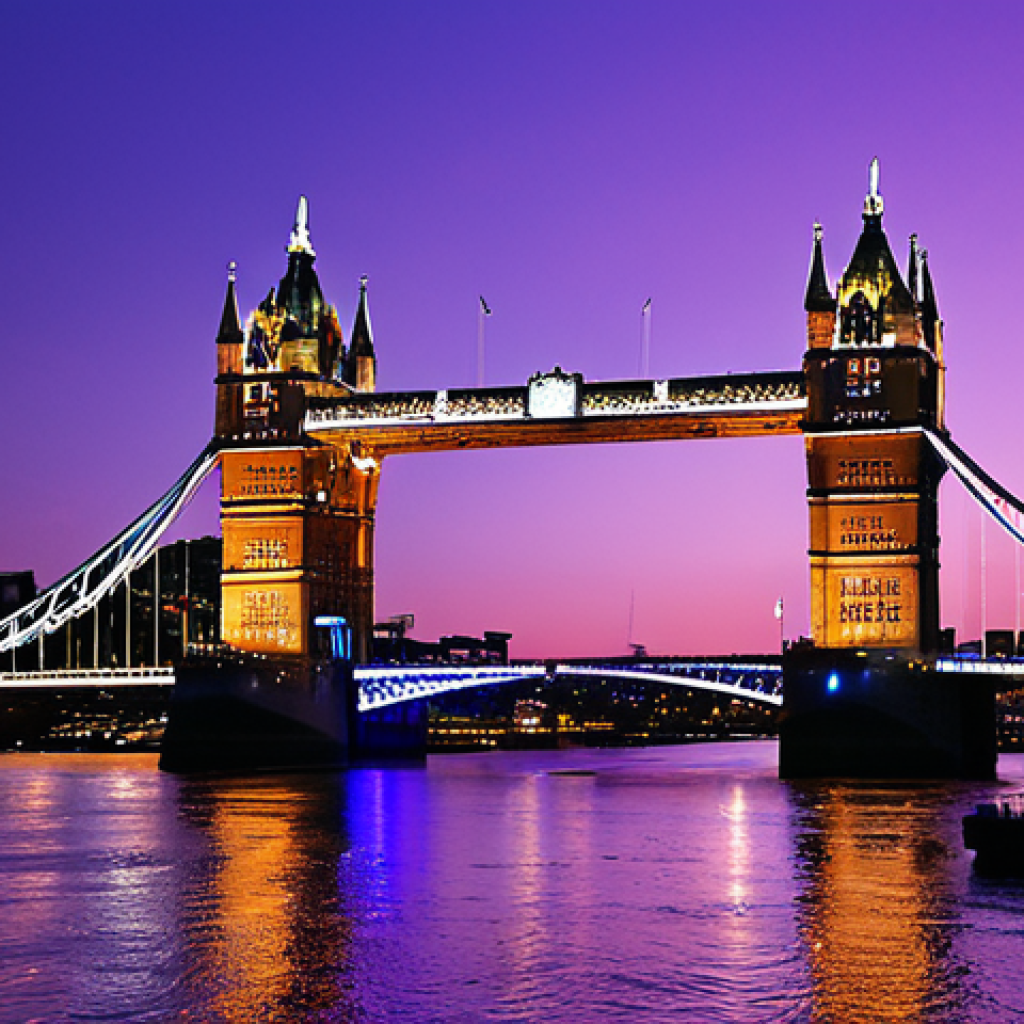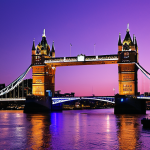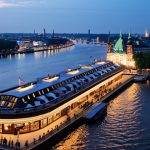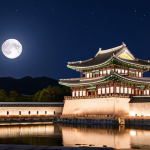There’s an undeniable magic that washes over a city as twilight descends, isn’t there? I’ve always been utterly captivated by how the very structures we take for granted during the day—the grand bridges, the towering landmarks—transform into luminous, almost ethereal beings under the cloak of night.
It’s more than just turning on a light switch; it’s an intentional, breathtaking spectacle, a carefully choreographed dance of shadow and glow that breathes a whole new life into the urban landscape.
Standing there, watching the reflections shimmer on the water, like when I visited San Francisco and saw the Golden Gate Bridge bathed in its warm, inviting light, it truly hits you just how much deliberate artistry and vision goes into crafting these nocturnal masterpieces.
What I’ve come to realize, especially seeing the latest developments, is that we’re moving beyond static illumination. Urban planners and designers are now leveraging incredible technology, from dynamic LED systems that pulse with the city’s energy to sustainable solutions that minimize light pollution while maximizing visual impact.
It’s a delicate balance, aiming for beauty without compromising our night skies or energy grids. Looking ahead, it’s not hard to imagine AI-driven light displays that adapt to real-time events, or augmented reality overlays that let us interact with these illuminated giants, blending physical awe with digital innovation.
The future of our nocturnal cityscapes promises an even more immersive, perhaps even personalized, experience. Let’s delve deeper into this captivating world.
The Art of Nocturnal Illumination
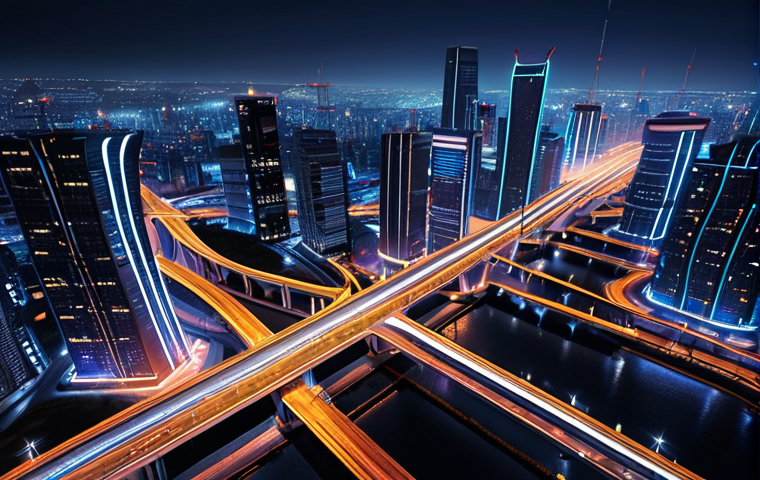
There’s this profound sense of wonder that washes over me whenever I see a city truly come alive after sunset. It’s not just about visibility, is it? It’s about a deliberate, meticulous artistry that transforms mundane structures into something truly spectacular. I remember vividly a recent trip to London, seeing Tower Bridge bathed in those incredible purple and blue hues. It wasn’t just lit; it was *painted* with light, each architectural detail highlighted, drawing your eye to the magnificent craftsmanship. This isn’t accidental; it’s the result of incredible vision from urban designers and lighting architects who understand that light can sculpt, define, and evoke powerful emotions. They’re effectively creating a second skin for the city, one that only emerges when the sun dips below the horizon, inviting us to see familiar places through an entirely new lens. It’s a testament to human creativity, turning concrete and steel into canvases for light.
1. Sculpting Light: Beyond Mere Visibility
When we talk about urban lighting, we often think of streetlights—functional, necessary, but perhaps not inspiring. However, the true magic lies in the deliberate use of light as a sculptural tool. Imagine a skyscraper at dusk; a good lighting design doesn’t just flood it with light. Instead, it meticulously highlights its contours, its setbacks, its spire, creating a dynamic interplay of light and shadow that makes the building seem to breathe. It’s about understanding how light interacts with different materials—the glint off glass, the way light diffuses over stone, or the dramatic effect on brushed metal. I’ve personally seen how this can redefine a city’s character. In New York City, the way the Empire State Building’s spire changes colors for different events isn’t just a light show; it’s a living monument, a beacon that resonates with the city’s pulse and collective mood. It becomes a landmark that’s instantly recognizable, not just by its form, but by its nocturnal glow. This thoughtful approach extends to public spaces, too, guiding pedestrians, creating inviting plazas, and enhancing safety without resorting to harsh, uninspired illumination.
2. The Emotional Palette of Urban Glow
Light has an uncanny ability to influence our mood and perception. Think about the warm, inviting glow of a neighborhood bistro compared to the stark, sterile lighting of an office building. Urban lighting designers are incredibly attuned to this. They select specific color temperatures and intensities to evoke certain feelings. Cooler, crisp whites might signify modernity and energy in a financial district, while warmer, softer amber tones could create a sense of comfort and history in an older part of town. I recall walking through a beautifully lit historical district in Boston, where the gas lamps cast a soft, almost nostalgic glow that transported me back in time. It wasn’t just pretty; it was an immersive experience that tapped into a shared heritage. This emotional connection is vital, as it transforms a simple commute or an evening stroll into something more meaningful, more engaging. It’s about crafting an atmosphere that makes us feel something, whether it’s awe, tranquility, excitement, or even a sense of belonging within the urban fabric.
Technological Marvels Reshaping City Lights
It’s truly mind-boggling how far lighting technology has come, isn’t it? What was once a simple bulb has transformed into an intricate network of smart systems capable of extraordinary feats. Just a decade ago, most city lighting was static, energy-hungry, and frankly, a bit dull. Now, we’re seeing dynamic LED installations that can change color, intensity, and even pattern in real-time, all controlled by sophisticated software. I recently visited Las Vegas and saw the Fremont Street Experience, which is just jaw-dropping. It’s a massive LED canopy that puts on a dazzling light and sound show every night. It felt less like a static display and more like a living, breathing digital canvas. This shift isn’t just about making things look prettier; it’s about efficiency, adaptability, and creating truly immersive environments that were once the stuff of science fiction. The integration of advanced sensors and data analytics means lights can now respond to real-time conditions, brightening when needed, dimming when not, and even adapting to pedestrian traffic. It’s making our cities smarter, safer, and far more engaging after dark.
1. From Filaments to Smart Grids: An Evolution
The journey from Edison’s incandescent bulb to today’s highly advanced LED systems is nothing short of revolutionary. Incandescent and even early fluorescent lights were energy hogs, generating a lot of heat and offering limited control over color or intensity. The advent of LED (Light Emitting Diode) technology changed everything. LEDs are incredibly energy-efficient, boast a much longer lifespan, and offer unprecedented control over color, dimming, and directionality. This allowed designers to break free from the constraints of traditional lighting. Beyond the individual fixture, the real game-changer has been the networking of these lights into smart grids. Imagine streetlights that communicate with each other, adjusting their brightness based on ambient light levels or pedestrian movement detected by integrated sensors. I’ve seen this in action in some parts of Portland, Oregon, where the streetlights are connected to a central system. During quieter hours, they dim, saving energy, but instantly brighten when a car or pedestrian approaches. This level of granular control was unthinkable just a few years ago and marks a significant leap towards truly intelligent urban infrastructure.
2. Programmable Futures: Dynamic Displays and AI Integration
The future of city lighting is undoubtedly programmable and deeply integrated with artificial intelligence. We’re moving rapidly towards a world where light displays aren’t just static installations but dynamic, responsive entities that can adapt to events, weather, or even public mood. Imagine a city bridge that pulses with vibrant colors during a major sporting event, or changes its hues to reflect a national holiday. These dynamic capabilities, powered by sophisticated control systems and increasingly by AI, allow for truly breathtaking spectacles. AI algorithms can analyze vast amounts of data—traffic flow, weather patterns, energy prices, even social media sentiment—to optimize lighting in real-time. For example, AI could dynamically adjust lighting levels in specific areas to enhance safety during peak foot traffic or minimize light pollution during a meteor shower. This isn’t just about aesthetics; it’s about creating hyper-efficient, highly responsive urban environments that truly serve their inhabitants. It’s exhilarating to think about the possibilities, from interactive light installations that respond to human gestures to entire city districts that can be instantly re-illuminated for emergencies or celebrations.
Balancing Brilliance with Environmental Responsibility
As captivating as these illuminated cityscapes are, there’s a vital conversation happening around the environmental impact of all that light. It’s not just about energy consumption anymore, though that’s still a huge factor. We’re becoming much more aware of “light pollution” – the excessive or misdirected artificial light that washes out the night sky, impacts wildlife, and can even affect human health. I’ve personally experienced the frustration of trying to stargaze from my backyard in a suburban area, only to have the faint glow of the nearby city obscure all but the brightest stars. It truly makes you appreciate the value of a dark sky. Thankfully, urban planners and lighting designers are now heavily invested in finding solutions that allow us to celebrate our cities at night without compromising our environment. This means adopting ‘dark-sky friendly’ fixtures, using shielded lights that direct illumination downwards, and even implementing sophisticated dimming schedules. It’s a delicate dance between making our cities beautiful and safe, and preserving the natural wonder of the night. It’s about conscious design, where sustainability is as important as aesthetics.
1. Reclaiming the Night Sky: Mitigating Light Pollution
Light pollution is a growing concern, impacting everything from migrating birds who lose their way, to sea turtle hatchlings disoriented by coastal lights, and even potentially disrupting human sleep cycles. The good news is that there are effective strategies to combat it without plunging cities into darkness. The primary culprit is often unshielded or upward-facing lights that scatter light indiscriminately into the atmosphere. The solution involves using full cut-off fixtures that direct all light downwards, preventing spillover into the sky or adjacent properties. Many cities are now implementing strict ordinances based on “dark-sky friendly” principles, requiring specific types of lighting for new developments and retrofitting older systems. I’ve seen some incredible examples of this, particularly in places like Flagstaff, Arizona, which is a designated International Dark Sky City. Their commitment to responsible lighting allows residents and visitors to enjoy truly pristine night skies, which is a rare and precious thing in our increasingly illuminated world. It’s about using light intelligently, illuminating what we need to see, and nothing more.
2. Eco-Conscious Luminous Design
Beyond simply reducing light pollution, modern urban lighting design is embracing a holistic approach to sustainability. This means considering the entire lifecycle of lighting systems, from manufacturing to energy consumption and eventual disposal. LED technology, as I mentioned earlier, is a cornerstone of this, offering significant energy savings compared to older technologies. But it goes further: designers are now exploring solar-powered streetlights, often coupled with battery storage, for areas where grid connection is difficult or costly. Smart controls that allow for dynamic dimming and scheduling are also crucial, ensuring lights are only at full brightness when needed. For instance, in many European cities like Copenhagen, lights in parks or less-trafficked areas might dim significantly after midnight, only to brighten if a motion sensor detects someone. This isn’t just about saving money on electricity; it’s about minimizing the carbon footprint of urban illumination. My own energy bills plummeted when I switched to LED lighting in my home, so I can only imagine the impact on a city-wide scale. It’s about making conscious choices that benefit both the urban environment and the planet.
The Economic Ripple of a Luminous Skyline
It’s fascinating to consider that the beauty of a city at night isn’t just an aesthetic luxury; it’s a powerful economic driver. A well-lit skyline, iconic bridges, and vibrant public spaces transformed by light draw in millions of tourists annually, boosting local businesses, hotels, and restaurants. Think of Paris, the “City of Light,” or the dazzling nighttime vista of Hong Kong’s Victoria Harbour. These aren’t just pretty pictures; they’re magnets for global tourism, generating substantial revenue. When I visited Sydney, the illuminated Opera House and Harbour Bridge at night were absolutely breathtaking, drawing huge crowds to the waterfront, who then spent money in the surrounding areas. Beyond tourism, strategic lighting can enhance property values, attract businesses, and even improve public safety, encouraging longer stays and increased economic activity in commercial districts. It signals vitality, prosperity, and a sense of safety, all of which are crucial for a thriving urban economy. It’s a brilliant example of how art and design can have a very tangible, positive impact on a city’s financial health.
1. Illuminating Economies: Tourism and Investment
The direct correlation between stunning urban illumination and economic prosperity is undeniable. Cities that invest in beautiful and distinctive nightscapes often see a significant uptick in tourism. Tourists are drawn to iconic illuminated landmarks, not just for sightseeing, but for the photo opportunities that flood social media, further amplifying the city’s appeal. This influx of visitors translates directly into increased revenue for local businesses—hotels, restaurants, shops, and tour operators all benefit. Beyond tourism, a well-lit and vibrant city can be a huge draw for corporate investment and talent. Businesses are increasingly looking for locations that offer a high quality of life for their employees, and an attractive, safe, and dynamic night environment is a key factor. A city that looks good at night projects an image of modernity, safety, and cultural richness, all of which contribute to its economic competitiveness. This is why you see major cities worldwide continually upgrading their lighting infrastructure – it’s a strategic investment in their brand and future.
2. Enhancing Urban Value and Livability
It’s not just grand landmarks that contribute to the economic impact of light; it’s also the subtle ways lighting enhances livability. Well-lit streets, parks, and pedestrian zones create a sense of safety and security, encouraging people to spend more time outdoors after dark. This leads to increased foot traffic in commercial areas during evening hours, benefiting local businesses and fostering a vibrant nightlife. Moreover, improved lighting can contribute to increased property values in both residential and commercial areas, as people are willing to pay more for environments that feel safe and aesthetically pleasing. I’ve heard countless anecdotes from friends who say they feel much more comfortable walking home late at night in neighborhoods with modern, well-designed lighting compared to older, dimly lit areas. This enhanced sense of security and aesthetic appeal not only draws residents and businesses but also retains them, fostering stable communities and long-term economic growth. It’s about creating an inviting atmosphere that makes people want to live, work, and play in the city, ensuring its continued vitality.
| Aspect of Urban Lighting | Economic Impact | Environmental Impact | Technological Shift |
|---|---|---|---|
| Iconic Landmarks | Boosts tourism, enhances city branding, attracts foreign investment. | Potential for light pollution if not managed; high energy use in older systems. | Moving from static floodlights to dynamic, color-changing LEDs with AI control. |
| Street & Public Area Lighting | Improves safety, extends evening economic activity, increases property value. | Reduced light pollution with shielded fixtures; significant energy savings with smart LEDs. | Transition from HPS/MH to networked LEDs with dimming, motion sensors, and remote management. |
| Architectural Lighting | Creates unique urban identity, supports creative industries (designers, engineers). | Can be precise to minimize spill; sustainable materials and low-power LEDs are key. | Advanced projection mapping, adaptive lighting systems, real-time artistic displays. |
Crafting Iconic Visual Signatures
Every truly great city has a signature, a visual identity that immediately springs to mind, and for many, that identity is defined by its nightscape. It’s more than just a famous building; it’s how that building comes alive against the velvet backdrop of the night. Think of the Eiffel Tower, twinkling against the Parisian sky, or the vivid lights of Times Square that make New York feel perpetually alive. These aren’t just structures; they’re global icons, and their nocturnal illumination is a critical part of their mystique. I remember the first time I saw the Sydney Opera House lit up during Vivid Sydney – it was absolutely spellbinding, an architectural masterpiece transformed into a canvas of light. It made me realize just how much deliberate thought goes into ensuring these landmarks not only look spectacular but also become unforgettable symbols that resonate with people worldwide. This careful curation of light essentially creates a city’s nocturnal fingerprint, making it distinct and instantly recognizable, fostering a sense of pride among locals and wonder among visitors. It’s a powerful statement about a city’s ambition and artistry.
1. Landmark Legacies: Lighting as Identity
For many cities, specific landmarks become synonymous with their identity, and their night lighting plays an immense role in cementing this status. The way a building is lit can communicate its history, its modernity, or its cultural significance. Consider the illuminated skyline of Shanghai’s Pudong district – it screams futuristic ambition and economic power. The combination of its distinct architecture and the coordinated, often dynamic, lighting creates an unmistakable visual signature that’s instantly recognizable on a global scale. This isn’t just about making buildings visible at night; it’s about amplifying their presence, giving them a voice after dark. When I see photos of these landmarks, it often makes me feel a surge of wanderlust, a desire to experience that unique glow in person. This “lighting as identity” concept isn’t limited to skyscrapers; it applies to historical monuments, bridges, and even natural features that are thoughtfully illuminated to create a sense of place and heritage, turning them into living symbols of their respective cities.
2. The Global Spectacle: Cities as Art Installations
Some cities have taken the concept of nocturnal illumination to an entirely new level, transforming their entire urban fabric into a grand, immersive art installation. These aren’t just individual landmarks; they’re integrated lightscapes where entire districts or waterfronts become a synchronized symphony of light, color, and movement. Think of light festivals that pop up in cities like Amsterdam or Lyon, where artists use buildings, canals, and public spaces as their canvases for incredible light projections and interactive installations. These events draw massive crowds, turning the city into a vibrant, living gallery that changes with the light. What’s truly exciting is how these temporary spectacles are influencing permanent urban lighting, pushing the boundaries of what’s possible. The integration of advanced projection mapping and sophisticated LED systems means that a city can literally transform its appearance with the flick of a switch, offering an endless array of visual narratives. It’s an evolving art form that invites us to experience the city not just as a place, but as a dynamic, ever-changing masterpiece that we can walk through and interact with.
The Personal Connection: Our Emotional Response to Light
Beyond all the technology and economic impact, there’s something incredibly personal about how we experience a city’s lights. It’s almost primal, isn’t it? The way a well-lit path makes you feel safe, or a twinkling skyline fills you with a sense of awe. I’ve always been someone who loves walking around a city at night, and what I’ve noticed is that the lighting directly impacts my emotional state. A dimly lit alley can evoke unease, while a vibrant, well-lit street can fill you with excitement and energy. It’s not just about what you see, but how you *feel* when you’re immersed in that glow. The soft, warm light spilling from a cozy cafe, the playful sparkle of lights on a bridge reflected in the water – these moments create memories that linger. For me, these are the true magic of urban nightscapes, the way they connect with our inner selves, fostering a sense of wonder, comfort, or even adventure. It’s about creating spaces where people feel truly alive, where their experiences are enhanced by the subtle dance of light.
1. My Own Journey Through Illuminated Wonders
I’ve been fortunate enough to travel quite a bit, and without fail, the night lighting of a city leaves some of the most profound impressions on me. I still vividly recall my first visit to Tokyo, stepping out into Shinjuku at night. The sheer volume of neon and LED displays was almost overwhelming, but in the most exhilarating way possible. It wasn’t just bright; it was a sensory explosion, a living, breathing testament to the city’s energy and innovation. It made me feel incredibly small yet completely connected to the pulse of the metropolis. Then there’s the stark contrast of places like Kyoto, where historical temples are softly illuminated, creating an atmosphere of serene beauty and deep reverence. These experiences aren’t just visual; they’re deeply emotional, shaping my perception of a place and its culture. It’s these personal encounters with light that reinforce for me the incredible power of thoughtful urban illumination – it transforms mere sightseeing into genuine, heartfelt experience, often leaving me with a sense of profound wonder and gratitude.
2. The Feeling of Belonging: Community and Connectivity
Beyond individual awe, well-designed urban lighting also fosters a sense of community and connectivity. When public spaces, parks, and pathways are beautifully and safely lit, people are more inclined to use them, even after dark. This creates opportunities for social interaction, fostering a vibrant communal life. I’ve often seen families enjoying evening strolls in lit parks, or friends gathering in illuminated plazas, feeling secure and welcome. It’s about creating an inclusive environment where everyone feels comfortable and encouraged to engage with their surroundings. This sense of shared experience, whether it’s admiring a holiday light display with neighbors or simply feeling safe walking down a well-lit street, strengthens the social fabric of a city. It builds connections, turning anonymous spaces into cherished communal grounds. The subtle magic of light helps transform isolated individuals into a cohesive community, all benefiting from the beauty and security of their shared urban environment after the sun has set.
Envisioning the Smart Cities of Tomorrow
If what we’ve seen so far is impressive, just imagine the urban nightscapes of the future. We’re on the cusp of an era where light won’t just illuminate; it will *interact*, *adapt*, and even *teach*. The integration of hyper-intelligent sensors, AI, and even augmented reality promises to transform our cities into dynamic, responsive entities that truly understand and cater to their inhabitants. I’m talking about light systems that can detect an emergency and instantly guide first responders with dynamic pathways, or public spaces where light patterns respond to your movement, creating a personalized experience. It’s not just about efficiency or aesthetics anymore; it’s about creating living, breathing urban environments that are intuitively aware of human needs and environmental conditions. The line between physical infrastructure and digital experience is blurring, opening up incredible possibilities for how we live, work, and play in our cities after dark. It’s going to be a fascinating journey into a future where every single light fixture could potentially be a node in a vast, intelligent network.
1. AI-Driven Lightscapes: Adaptive and Responsive Cities
The next frontier in urban illumination is undoubtedly AI-driven lightscapes. Imagine streetlights that don’t just respond to motion, but can predict traffic flow, analyze real-time weather conditions, and even detect air quality, adjusting their brightness and color temperature accordingly. AI will enable lighting systems to learn patterns over time, optimizing energy consumption while ensuring safety and enhancing visual comfort. For instance, during a sudden downpour, AI might automatically brighten road lighting to improve visibility, or dim lights in less-frequented park areas during off-peak hours based on historical usage data. This level of dynamic adaptability means cities can become incredibly resource-efficient, only using light precisely where and when it’s needed. I’ve read about pilot programs in cities like Singapore, where AI is already being used to manage public utilities, and the potential for applying this to lighting is immense. It moves us away from static, rigid lighting plans to fluid, intelligent systems that are always optimizing, always learning, always responding to the city’s ever-changing pulse.
2. Augmented Reality: A New Layer of Interaction
And then there’s augmented reality (AR), which promises to add an entirely new, interactive layer to our nocturnal cityscapes. Imagine pointing your smartphone or wearing AR glasses and seeing real-time information or artistic overlays projected onto the very buildings around you, enhancing their physical illumination. Perhaps a historical landmark could have a virtual layer detailing its past, or a new development could showcase its future plans through dynamic AR projections. These digital enhancements could blend seamlessly with physical light, creating truly hybrid experiences. Think of an interactive light puzzle projected onto a building facade that citizens can solve together, or personalized art installations that respond to your gaze. This concept excites me immensely because it transforms passive viewing into active engagement, offering a personalized narrative that adapts to each individual’s interests. It’s about empowering people to not just observe the city’s light, but to interact with it, to shape their own nocturnal journey, effectively turning the entire urban environment into a vast, collaborative digital canvas that changes with every perspective.
Concluding Thoughts
As I reflect on the incredible journey through urban illumination, it’s clear that city lights are far more than just practical necessities. They are a profound blend of art, technology, and human emotion, constantly evolving to shape our experiences after dark. From the sculptural brilliance that transforms skylines to the eco-conscious innovations that protect our night skies, every beam tells a story. They boost economies, forge civic identities, and, most importantly, connect with us on a deeply personal level, making our cities feel alive, safe, and truly magical. It’s an ongoing testament to human ingenuity and our endless quest to beautify the world around us, even when the sun goes down.
Useful Information for the Urban Explorer
1. Seek out Dark Sky Preserves: If you’re passionate about seeing the stars, look for “International Dark Sky Parks” or “Reserves” near you. Places like Joshua Tree National Park (USA) or the Brecon Beacons National Park (UK) offer incredible stargazing opportunities, free from urban light pollution.
2. Explore Light Festivals: Many major cities host annual light festivals (e.g., Vivid Sydney, Lyon’s Fête des Lumières, Amsterdam Light Festival). These events showcase cutting-edge lighting art and are a fantastic way to experience a city’s nocturnal transformation.
3. Pay Attention to Lighting Styles: Next time you’re out, observe the different types of lighting. Notice how warm amber tones feel different from cool white lights, or how uplighting vs. downlighting changes a building’s presence. It’s a great way to appreciate design.
4. Consider Smart Home Lighting: Applying principles of urban lighting to your own home can be fun. Smart bulbs and systems allow you to control color temperature, dimming, and scheduling, mimicking the adaptive urban environments we discussed.
5. Support Sustainable Lighting Initiatives: Look into local government or community projects that advocate for dark-sky friendly lighting or energy-efficient LED retrofits. Your support can help preserve the natural night and reduce environmental impact.
Key Takeaways
Urban lighting is a multifaceted discipline that extends far beyond mere visibility. It’s an art form that sculpts cityscapes, evokes emotions, and defines a city’s unique identity. Driven by technological advancements like smart LEDs and AI, future cities will feature dynamic, responsive, and highly efficient lightscapes. However, this progress must be balanced with environmental responsibility, mitigating light pollution and promoting eco-conscious design. Ultimately, the brilliance of a city’s nocturnal glow has significant economic impact, fostering tourism, enhancing livability, and deepening our personal connection to the urban environment.
Frequently Asked Questions (FAQ) 📖
Q: How has urban lighting truly transformed beyond just flipping a switch, and what’s your take on its evolution?
A: Oh, it’s night and day, truly! I remember visiting places like New York City years ago, and while the lights were certainly on, it felt almost… flat. Static, you know?
Just bright. Now, though, it’s a whole different ballgame. What I’ve personally observed is this incredible shift from mere illumination to deliberate artistic expression.
It’s like the buildings themselves are breathing, pulsating with light. Take the recent illumination of the Empire State Building for different events – it’s not just a color change; it’s a dynamic, storytelling canvas.
Seeing the way designers now use sophisticated LED systems to create these layered, almost painterly effects, well, it absolutely captivates me. It’s gone from simply making things visible to making them vibrant, alive, adding a whole new dimension to our urban experience after dusk.
Q: With all this incredible tech, what are the biggest hurdles designers and planners face when trying to balance beauty with practicality in urban illumination?
A: That’s the million-dollar question, isn’t it? From my conversations with folks in the industry, and just seeing it firsthand in places like downtown Los Angeles or even smaller cities trying to revitalize their centers, it’s a constant tightrope walk.
It’s like trying to bake a cake for a thousand people, perfectly, without running out of flour or making it too sweet. Energy consumption is a massive one; while LEDs are efficient, lighting up entire skylines still draws a significant amount of power, impacting utility grids and, let’s be honest, our wallets if those costs get passed on.
Light pollution is another huge headache. I’ve seen firsthand how an overly bright billboard or an unshielded streetlight can just obliterate the stars, especially if you’re trying to enjoy a quiet evening in a city park.
Then there’s the sheer complexity of maintaining these dynamic systems, ensuring they’re durable enough to withstand the elements, and that they enhance, rather than detract from, the natural environment.
It’s a delicate dance of aesthetics, economics, and ecology.
Q: Looking ahead, what innovations in urban illumination excite you the most, and how do you envision them changing our experience of city nights?
A: Honestly, this is where my imagination really takes flight! The possibilities feel endless. I mean, imagine walking through, say, downtown Chicago, and the iconic buildings around you are no longer just lit up, but are subtly responding to the actual flow of people, or perhaps even mirroring the weather patterns in real-time.
The idea of AI-driven light displays that literally respond to the city’s pulse, its events, or even just our collective mood, that’s incredibly exciting.
But what truly blows my mind are the augmented reality overlays that were hinted at. Think about it: you could hold up your phone, or perhaps even just wear a pair of AR glasses, and suddenly these monumental structures could have interactive narratives projected onto them, blending the physical awe with digital innovation.
It’s not just about looking at a pretty light show; it’s about becoming part of it, experiencing a personalized, perhaps even story-driven, interaction with our illuminated giants.
I could see myself spending hours just exploring, discovering new facets of familiar landmarks. That kind of immersive, personalized experience is what I genuinely believe will define the future of our nocturnal cityscapes.
📚 References
Wikipedia Encyclopedia
구글 검색 결과
구글 검색 결과
구글 검색 결과
구글 검색 결과
구글 검색 결과
